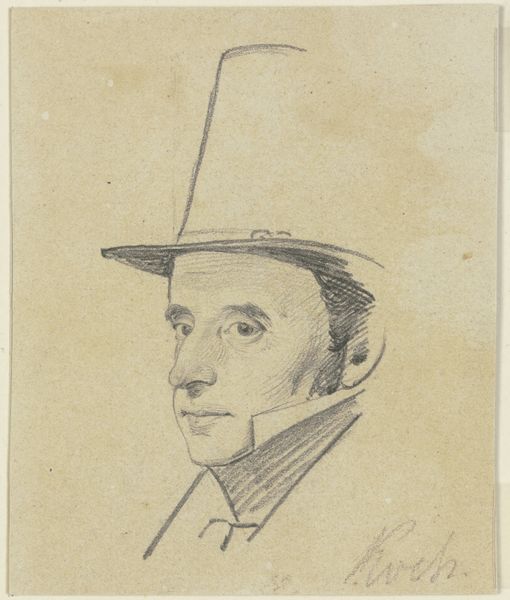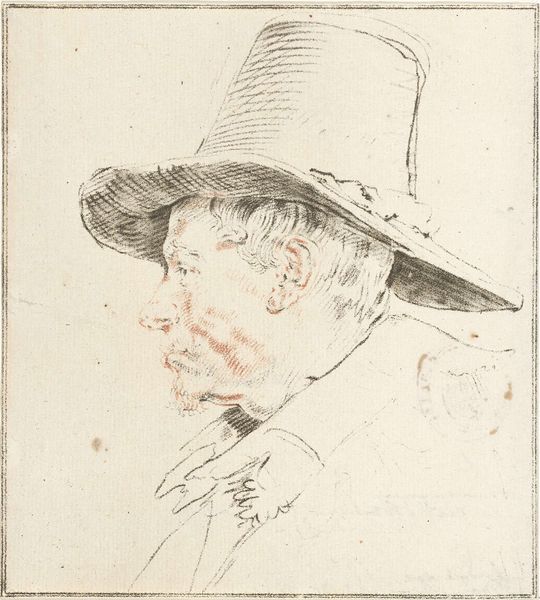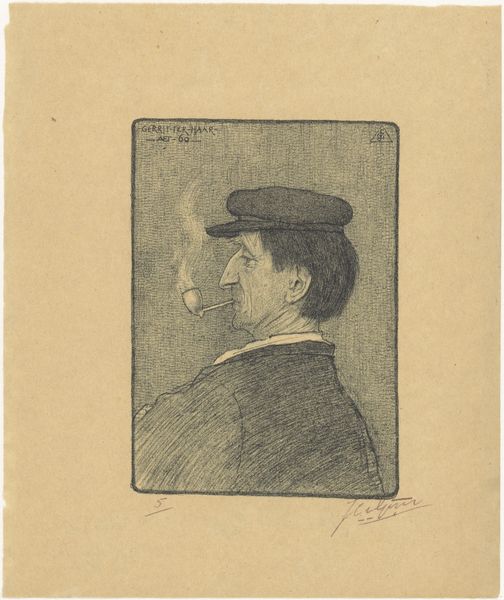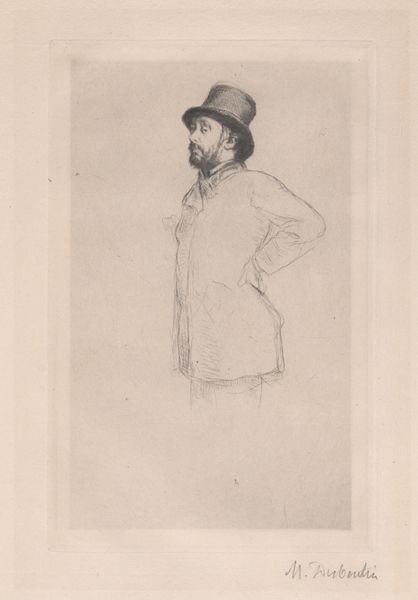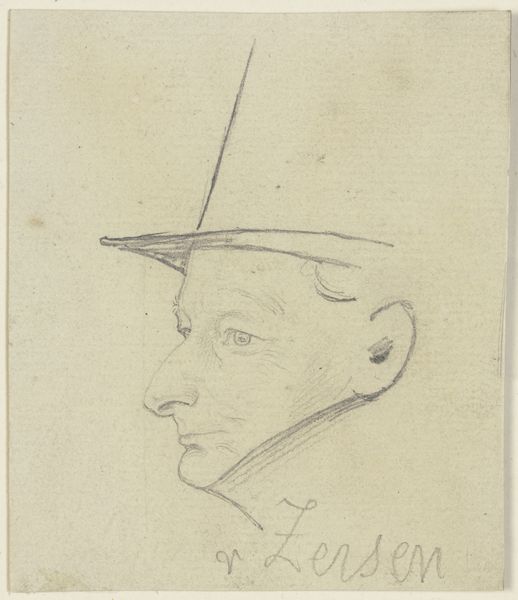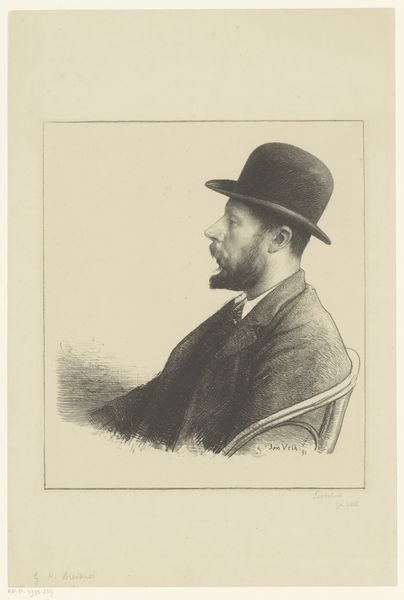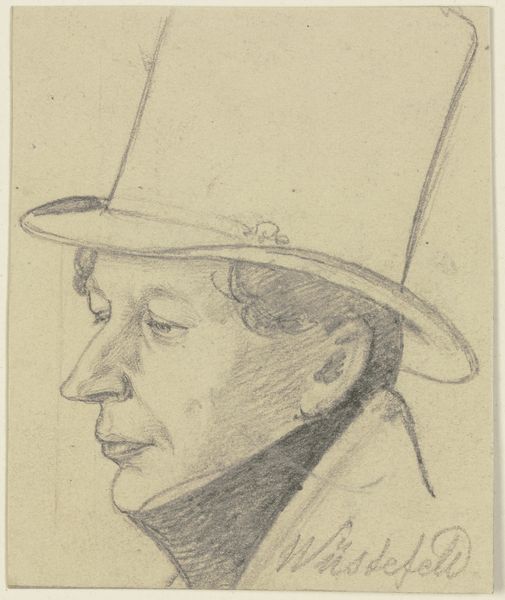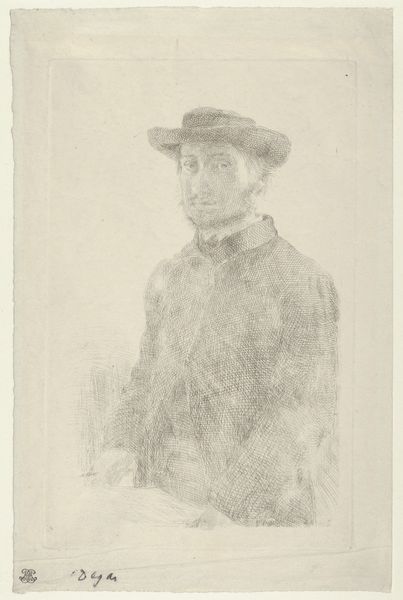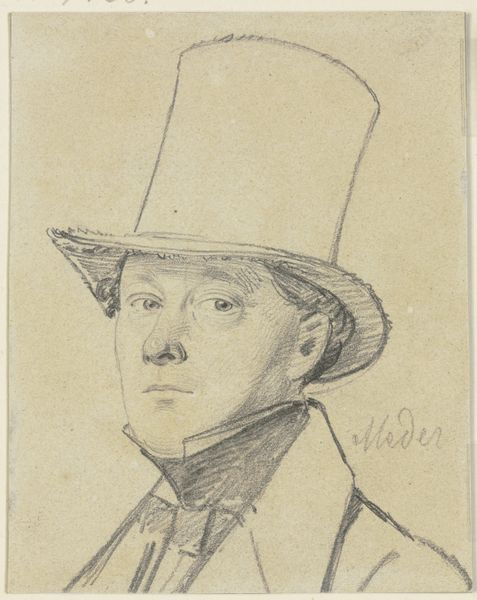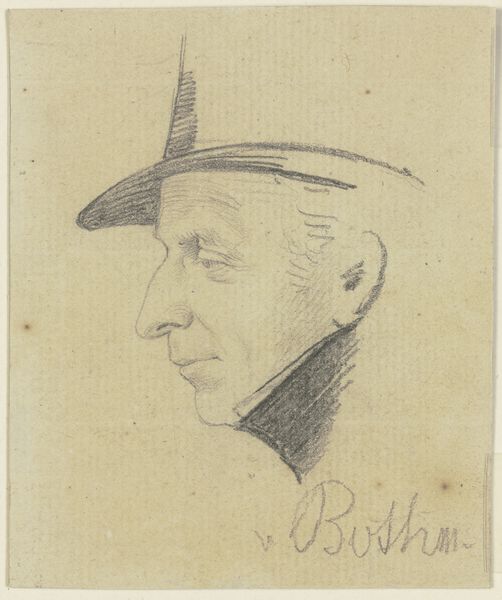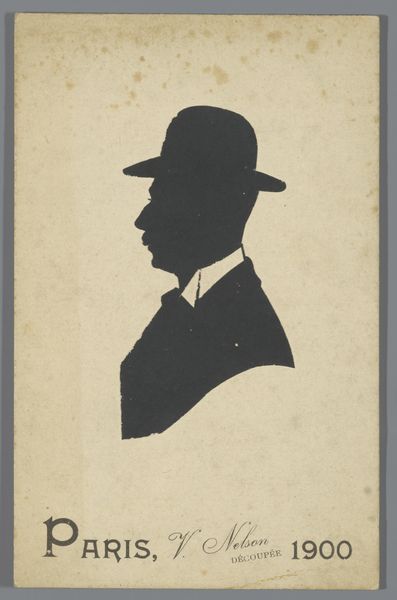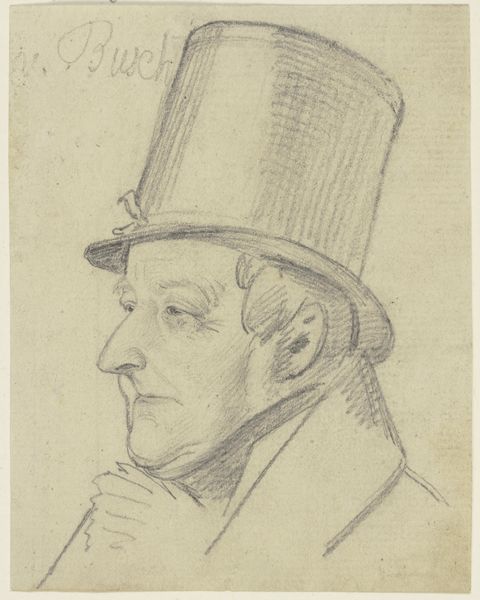
drawing, pencil, graphite
#
portrait
#
drawing
#
pencil drawing
#
pencil
#
graphite
#
portrait drawing
Copyright: Public Domain
Curator: Here in the Städel Museum, we're looking at a portrait identified as "Bildnis Stadtkämmerer la Rose" which translates to "Portrait of City Treasurer la Rose". It's a graphite and pencil drawing by Carl Hoff. Editor: There's a real directness to this piece. It feels immediate and personal, almost as if Hoff quickly captured the treasurer during a break in his duties. The stark, simple lines convey an assured sense of character. Curator: It's fascinating how these portrait drawings often functioned in 19th-century civic life. Depicting figures like la Rose visually reinforced their social position. Consider how these portraits were often displayed in municipal buildings, subtly asserting authority. Editor: Indeed. Beyond social status, notice how the hat—such a pronounced part of the image—could be read as a symbol. In the past, hats signaled trade, social standing, or even allegiance. Does la Rose’s specific hat hold any similar culturally coded information for us? Curator: I haven't researched enough to say, though it’s quite probable! It also serves as an immediate identifier of profession and rank. Moreover, you can consider how the artistic tools, namely graphite and pencil in drawing, affect perception. Drawing had a certain documentary credibility. Editor: That's interesting. And think about the symbolism embedded in the profile view. Often associated with coins, cameos, and historical representations of power, here the profile presents la Rose almost like a contemporary civic medal, doesn’t it? Curator: An astute observation! These portraits in their construction subtly but assuredly constructed civic identities through well-established visual codes. These representations, even on paper, contributed to constructing and maintaining hierarchies. Editor: Absolutely, it’s a layering of symbolic weight that’s easily missed at first glance. The apparent simplicity is quite deceptive, hiding a well-structured statement about the city treasurer’s place in society. Curator: Thinking about it now, the drawing is also evidence of the artist's hand. It emphasizes human effort, not just artistic vision, and contributes to its enduring power. Editor: And seeing that the portrait now resides within the Städel museum, that sense of history persists today as we the viewer come face to face with figures and leaders of the past.
Comments
No comments
Be the first to comment and join the conversation on the ultimate creative platform.
